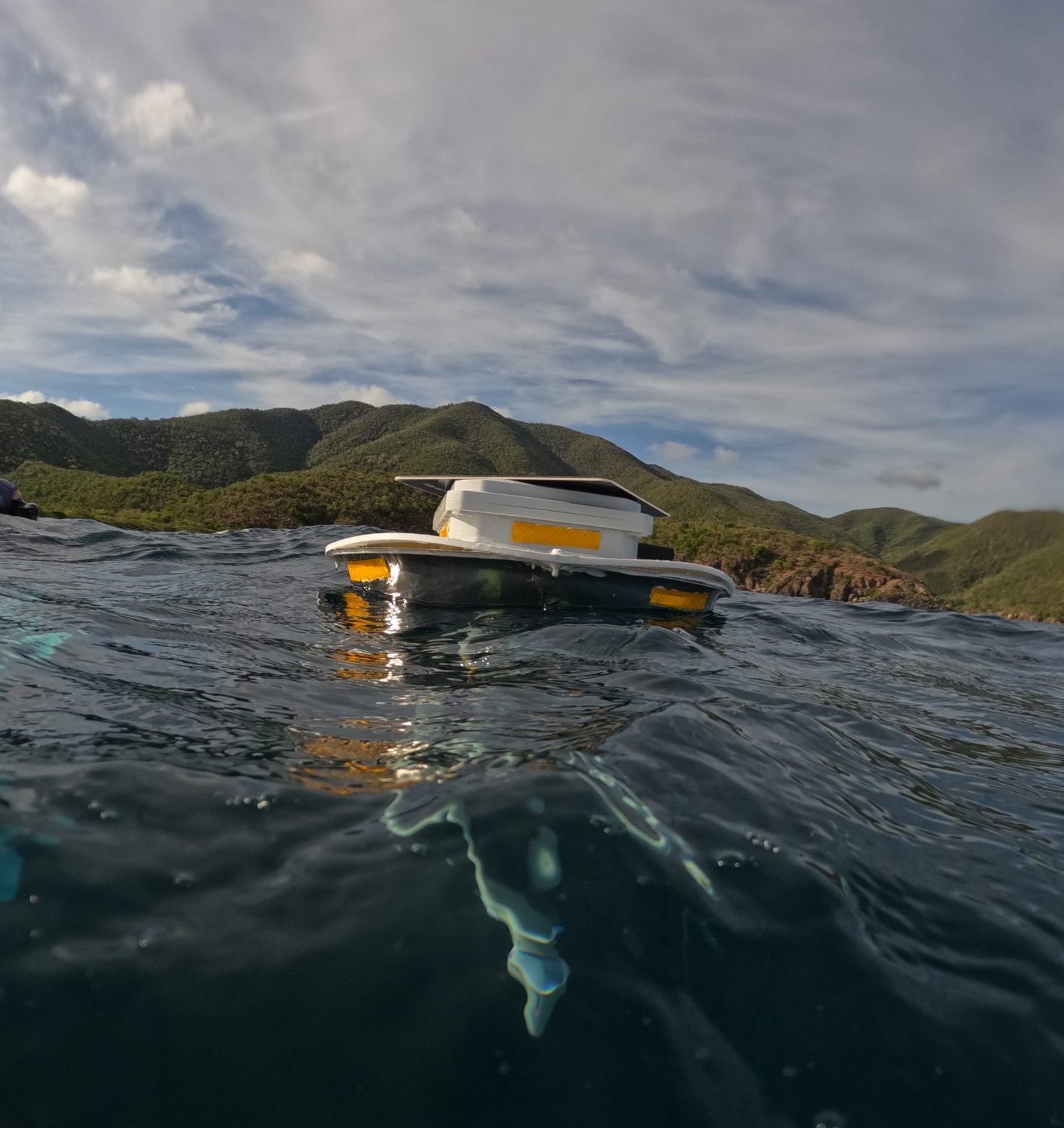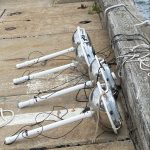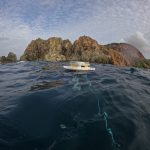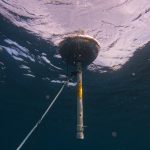Medusa: Real-Time Data and Animal Detection
The Medusa is a low-cost satellite-connected acoustic drifter that combines real-time acoustic detection of animal sounds with data telemetry of detections and noise statistics. It’s being developed through a partnership between WHOI and Loggerhead Instruments and field tested as part of the Wildlife and Offshore Wind (WOW) project to assist with the evaluation of potential impacts of windmill development on the North Atlantic Right Whale.

Passive acoustic monitoring (PAM) is a powerful tool for conservation, allowing expansive monitoring of marine environments with minimal intrusion. However, costs for PAM equipment remain high, and large acoustic datasets can require months of processing time, limiting management applications. The Medusa is a low-cost smart PAM device designed to be used around the world for monitoring the soundscapes of marine environments. The satellite-connected Medusa listens to the ocean as it drifts across a study area and processes what it hears with custom machine learning algorithms, allowing the location and frequency of sounds of interest to be transmitted in real-time. While designed as a drifter, the Medusa can also be moored in place as a low-cost acoustic monitoring solution for a single location. This tool has great potential to help researchers and resource managers monitor marine soundscapes and detect changes to areas of interest in real-time for more informed and effective decision making.
- Medusa ready for deployment off Cape Cod for Right Whale detection.
- A Medusa moored next to a coral reef in St. John, USVI for recording the reef’s soundscape as a means of monitoring reef health. Surface view.
- A Medusa moored next to a coral reef in St. John, USVI for recording the reef’s soundscape as a means of monitoring reef health. Underwater view.


